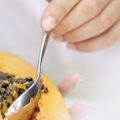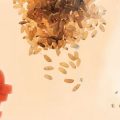Cutting Back On Sugar
By Janis Roszler, RD, CDE, LD/N
The American Heart Association (AHA) has a very important message for all Americans: Eat less added sugar. Sugar added to different products gives us extra, unnecessary calories that don’t offer any real nutritional value. If you eat more calories than you burn, you will gain weight. Obesity is linked to many health problems, including heart attacks, strokes and certain forms of cancer.
Sugar also raises the body’s insulin level. When sugar enters the body, it triggers the release of insulin. Insulin levels that remain high over a long period of time can cause inflammation that prevents the hormones that regulate the immune system from doing their job. When these hormones don’t function well, the risk of getting sick goes up.
Insulin also encourages our bodies to store fat. If you have more insulin in your blood than you need, you may gain weight more quickly and raise the level of certain fats (triglycerides) in your body. Both extra weight gain and high triglyceride levels contribute to heart disease.
HOW MUCH IS TOO MUCH?
The American sweet tooth has gotten worse. Over the past 30 years, we have increased our total calorie intake by about 150–300 calories a day. The number one source of those added calories comes from sugar-sweetened soft drinks. A 12-ounce can of regular soda contains the equivalent of 8 teaspoons of sugar.
THE SEARCH FOR HIDDEN SUGAR
A lot of the added sugar found in our foods is easy to spot : Grocery store shelves are filled with sugar-frosted cereals, and many desserts are glazed and frosted. But sugar is not always easy to see. For example, a 6-ounce container of low-fat, fruit-flavored yogurt has 7 teaspoons of sugar, and 4 tablespoons of ketchup contains 4 teaspoons of sugar.
To find hidden sugars, look closely at each product’s Nutrition Facts Label. The grams of sugar are listed under the Total Carbohydrates number. You can figure out how many teaspoons are found in that product if you have the gram amount because 4 grams of sugar equal one teaspoon.
Added sugars may go by different names that are listed on other products, such as sucrose, dextrose, glucose, fructose, high- fructose corn syrup, maltose and lactose. The natural sugars found in milk, fruit and vegetables are not empty calories, but are carbohydrates that provide the body with quick- and long-acting energy.
OTHER SWEETENERS
It is possible to cut back on sugar and still give in to your sweet tooth. There are many low-calorie and calorie-free sweeteners that are worth a try. Even though all of the artificial sweeteners on the market have been tested and are believed to be very safe, many experts still remind folks that everything is best in moderation; it is a good idea to limit your intake of artificially- sweetened drinks to two per day. While shopping, you may choose to buy a product that combines an artificial sweetener with a specific amount of sugar. Experts recently found that this mix may trigger the release of GLP-1, a substance in the body that tells the brain when it feels full. When the brain gets that message, it should curb your hunger so you stop eating.
The natural sugars found in milk, fruit and vegetables provide the body with quick- and long-acting energy.
If you take in a lot of sugar each day, try to cut back. Many natural foods, such as fruits and veggies, have a sweet taste that gets lost when buried in sweetened sauces and sugars. Give your health a boost and your taste buds a treat : Cut back on your sugar and still enjoy the sweet life.












